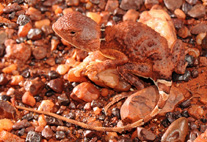Abstract
The genus Hemerodromia in Thailand is revised and full descriptions and keys are provided for all 25 species. Twenty new species are recognised: H. alphalutea sp. nov., H. anisoserrata sp. nov., H. anomala sp. nov., H. attenuata sp. nov., H betalutea sp. nov., H. conspecta sp. nov., H. deltalutea sp. nov., H. deminuta sp. nov., H. demissa sp. nov., H. epsilutea sp. nov., H. etalutea sp. nov., H. gammalutea sp. nov., H. isochita sp. nov., H. namtokhinpoon sp. nov., H. ocellata sp. nov., H. oriens sp. nov., H. phahompokensis sp. nov., H. songsee sp. nov., H. systoechon sp. nov. and H. zetalutea sp. nov. Five species known previously from China are recognised: H. acutata Grootaert, Yang & Saigusa, H. flaviventris Yang & Yang, H. furcata Grootaert, Yang & Saigusa, H. fusca Yang & Yang and H. yunnanensis Yang & Yang. Hemerodromia songsee sp. nov. and H. fusca Yang & Yang are also recorded from Vietnam. Distribution maps of all species are presented. Four categories of distribution patterns of apparently endemic species were identified in (1) the northern mountains (2) the northern lowlands (3) the south, and (4) east of Thailand. Some lowland species with wide distributions in eastern Asia were interpreted as ‘old Oriental elements’. Other montane species have wide distributions extending between the Himalayas and southeast China. Three lowland species have an apparently obligate association with alkaline, mineralised water courses where tufa deposition was evident. Tufa-linked assemblages of Hemerodromia may indicate a previously unrecognised and potentially diverse habitat for aquatic Empididae in Southeast Asia. Major historical factors determining contemporary distribution patterns were analysed in reference to a Climate History Model (Plant et al. 2012) and included (i) latitudinal migrations in response to climatically induced changes in the distribution of habitat (ii) radiation of high-elevation endemics from more widespread lowland forms (iii) historical connectivity and fragmentation of hydrological networks with possible marooning of taxa in stable tufa spring systems (iv) persistence of lowland forms in climatically ‘buffered’ stream environments during progressive aridification. Analysis of sampling methodology concluded that hand collecting was 2,000X more efficient at collecting numbers of Hemerodromia with a species discovery rate 775X greater than that with passive trapping methods (Malaise, flight interception and pan traps etc.) although both approaches are needed for full assessment of species richness. Consideration of the climatic, ecological and biogeographic complexity of tropical Southeast Asia suggests that an extremely rich Hemerodromia fauna awaits discovery in the region.

